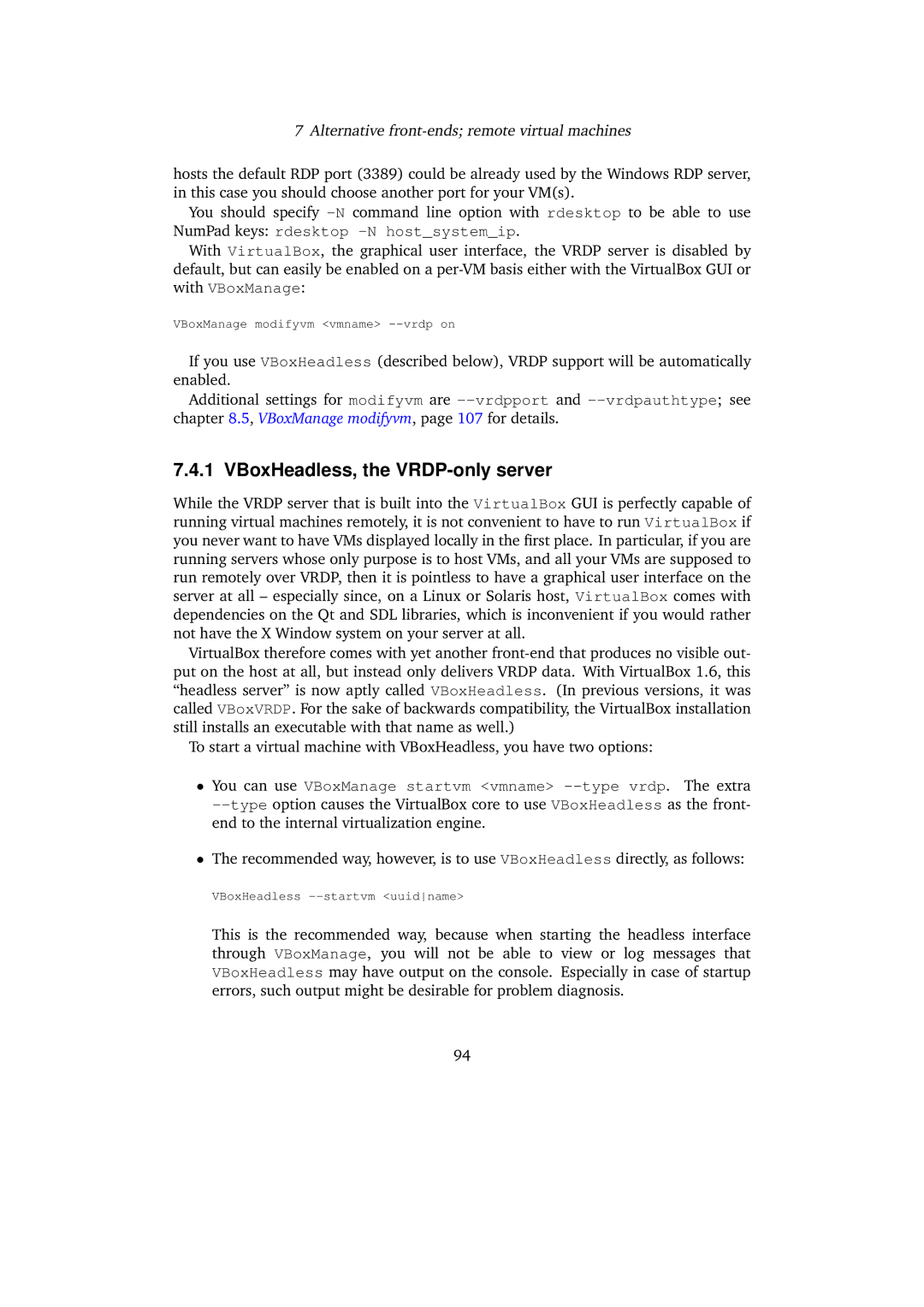7 Alternative
hosts the default RDP port (3389) could be already used by the Windows RDP server, in this case you should choose another port for your VM(s).
You should specify
With VirtualBox, the graphical user interface, the VRDP server is disabled by default, but can easily be enabled on a
VBoxManage modifyvm <vmname>
If you use VBoxHeadless (described below), VRDP support will be automatically enabled.
Additional settings for modifyvm are
7.4.1 VBoxHeadless, the VRDP-only server
While the VRDP server that is built into the VirtualBox GUI is perfectly capable of running virtual machines remotely, it is not convenient to have to run VirtualBox if you never want to have VMs displayed locally in the first place. In particular, if you are running servers whose only purpose is to host VMs, and all your VMs are supposed to run remotely over VRDP, then it is pointless to have a graphical user interface on the server at all – especially since, on a Linux or Solaris host, VirtualBox comes with dependencies on the Qt and SDL libraries, which is inconvenient if you would rather not have the X Window system on your server at all.
VirtualBox therefore comes with yet another
To start a virtual machine with VBoxHeadless, you have two options:
•You can use VBoxManage startvm <vmname>
•The recommended way, however, is to use VBoxHeadless directly, as follows:
VBoxHeadless
This is the recommended way, because when starting the headless interface through VBoxManage, you will not be able to view or log messages that VBoxHeadless may have output on the console. Especially in case of startup errors, such output might be desirable for problem diagnosis.
94
